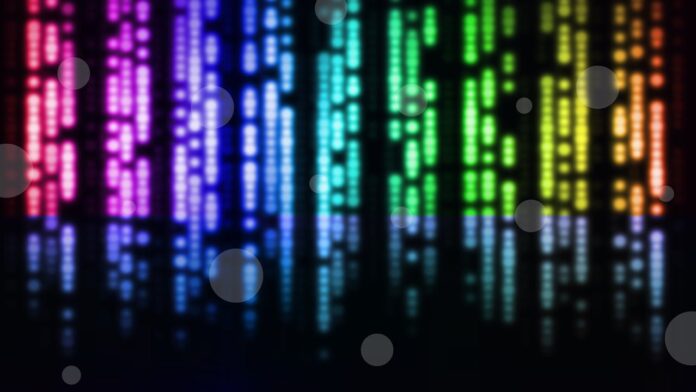Bifacial solar technology is a groundbreaking innovation in the field of renewable energy. Bifacial solar panels, often simply referred to as “bifacial,” have gained significant attention and adoption in the solar industry due to their ability to capture sunlight from both the front and rear sides of the panel. This unique characteristic allows bifacial panels to significantly increase energy production, making them a crucial player in the world of sustainable energy generation. In this comprehensive exploration, we will delve into the world of bifacial solar technology, examining its origins, underlying principles, applications, and its transformative impact on the renewable energy landscape.
Bifacial solar technology, or bifacial for short, represents a pivotal shift in the solar industry. Traditional solar panels are monofacial, meaning they capture sunlight only from one side, usually the front face of the panel. Bifacial panels, on the other hand, can harness sunlight from both the front and rear sides, offering the potential for increased energy yield. This innovative design is made possible through advanced materials and engineering techniques, making bifacial panels an essential component in the transition toward a more sustainable and efficient energy future.
The term “bifacial” essentially refers to the ability of these solar panels to generate energy from both the front and rear sides. This is made possible by their unique construction, which allows sunlight to pass through the panel and bounce off reflective surfaces, such as the ground or nearby structures. This reflected light, often referred to as albedo, contributes to the overall energy production of the panel, alongside the direct sunlight captured on the front side.
The concept of bifacial technology is rooted in the desire to maximize solar energy generation while overcoming limitations associated with traditional monofacial panels. Solar panels are traditionally installed with a fixed tilt and orientation to capture sunlight optimally. However, this approach can be restrictive, as it may not account for factors such as changing weather conditions and variations in the sun’s angle throughout the day. Bifacial panels offer a solution to these challenges by capturing both direct and reflected sunlight, enabling higher energy yields in a variety of conditions.
The underlying principle behind bifacial technology is the efficient utilization of reflected sunlight, also known as albedo. When sunlight strikes a surface, a portion is absorbed, and some of it is reflected. Bifacial panels are designed to capture this reflected light, which can be significant, depending on the surface properties of the surrounding environment. In essence, bifacial panels can generate energy not only from the direct sunlight that strikes the front side but also from the indirect sunlight that bounces off surfaces and illuminates the rear side.
The albedo effect can vary significantly depending on the ground cover and surface properties. Highly reflective surfaces, such as snow, sand, or water, can greatly enhance the energy production of bifacial panels. In urban environments, the reflection from concrete and buildings can also contribute to energy generation. The versatility of bifacial technology is, in part, what makes it a promising solution for various solar installations.
One of the key advantages of bifacial technology is its ability to generate more energy compared to monofacial panels. This enhanced energy yield can be particularly beneficial in situations where space is limited, and there is a need to maximize energy production from a limited area. Additionally, bifacial panels can contribute to more efficient land use in solar installations, as they can capture reflected light from the ground, reducing the need for additional land or mounting structures.
In addition to increased energy yield, bifacial panels offer several other advantages. These include improved energy production during cloudy or overcast conditions, as well as enhanced performance in early mornings and late afternoons when the sun is at lower angles. Bifacial technology is also known to be more tolerant of dust, dirt, and shading, making it a resilient choice for various environmental conditions. These benefits have positioned bifacial technology as a compelling option for a wide range of solar applications.
Bifacial panels are not only effective in utility-scale solar installations but also in commercial and residential settings. Their adaptability and enhanced energy production make them an attractive choice for rooftop solar systems, solar carports, and ground-mounted solar arrays. Bifacial panels can be integrated seamlessly into existing solar projects or incorporated into new installations to increase energy production without significantly expanding the physical footprint.
The versatility of bifacial technology also extends to its suitability for tracking systems. Solar tracking systems, which follow the movement of the sun throughout the day, can significantly enhance energy production. When combined with bifacial panels, tracking systems can further optimize energy capture by ensuring that the rear side of the panel receives the maximum amount of reflected light. This synergy between tracking systems and bifacial panels has the potential to revolutionize the solar industry by significantly increasing the overall efficiency of solar installations.
Bifacial technology is also an excellent fit for solar projects in regions with varying weather conditions. Whether in areas with frequent cloud cover, significant snowfall, or those with dramatic temperature fluctuations, bifacial panels can deliver consistent and robust energy production. This adaptability makes them a versatile choice for solar developers seeking to optimize their energy generation capabilities in diverse climates.
The application of bifacial panels is not limited to solar farms and residential rooftops. They can also be integrated into solar carports, where they serve a dual purpose by providing shade for vehicles and generating clean energy. Solar carports have gained popularity as a sustainable solution for both businesses and homeowners, and the addition of bifacial panels enhances their energy production, making them even more economically viable.
Another noteworthy application of bifacial technology is in agrivoltaics, which involves co-locating solar panels with agricultural activities. In this context, bifacial panels are mounted on structures above crop fields. This dual-use approach allows farmers to continue crop cultivation while simultaneously generating solar energy. The reflection of sunlight off the ground not only benefits energy production but can also have positive effects on crop growth by providing diffused light and reducing the impact of extreme weather conditions.
Bifacial technology is also well-suited for installations in desert regions, where highly reflective sand and intense sunlight can result in substantial energy gains. As the world seeks to harness the power of the sun in arid environments, bifacial panels are becoming an increasingly attractive choice for solar developers in these areas.
The innovative nature of bifacial technology is continually evolving, with ongoing research and development aimed at enhancing its performance and adaptability. Efforts are underway to improve the materials used in bifacial panels and optimize the design of the panels themselves. Additionally, tracking systems and installation techniques are being refined to maximize the energy capture potential of bifacial panels.
The potential for growth in the bifacial solar market is substantial. As the technology becomes more accessible and affordable, it is expected to play a pivotal role in the global transition to clean energy. The versatility and enhanced energy production capabilities of bifacial panels position them as a key component in the renewable energy landscape.
In conclusion, bifacial technology represents a transformative innovation in the field of renewable energy. The ability of bifacial panels to capture sunlight from both the front and rear sides offers significant advantages, including increased energy yield, improved performance in various environmental conditions, and enhanced adaptability to a range of applications. Bifacial technology has the potential to revolutionize the solar industry, contributing to more efficient and sustainable energy generation. As research and development efforts continue to advance the capabilities of bifacial panels, their role in the transition to clean energy is expected to become increasingly prominent.














